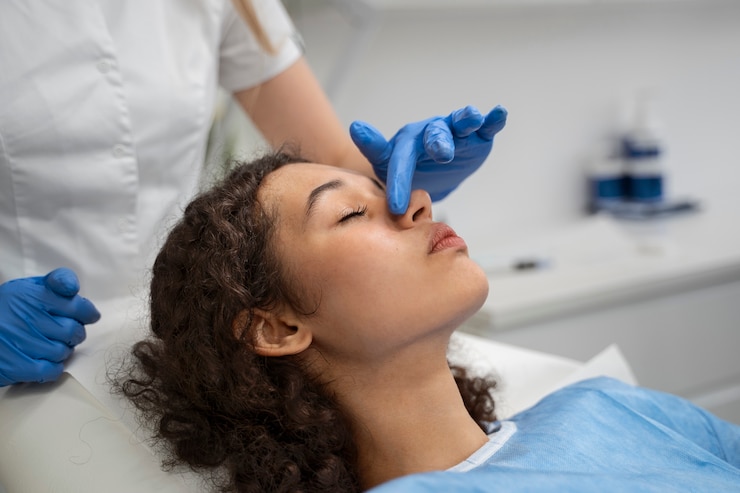Rhinoplasty, often referred to as a “nose job,” is a popular cosmetic and functional procedure designed to reshape or reconstruct the nose. Whether for medical or aesthetic reasons, this surgery is often sought to improve facial harmony and nasal function. In places like Rhinoplasty Dubai, the procedure has become increasingly common among individuals seeking refined facial features. But one question that frequently arises in consultations is: Does rhinoplasty change your smile too?
Understanding Rhinoplasty: A Quick Overview
Rhinoplasty is performed to either change the nose’s shape, size, or angle or to correct breathing issues caused by structural problems like a deviated septum. The surgery involves manipulation of bone, cartilage, skin, or all three. There are two primary approaches:
-
Open Rhinoplasty: Involves an external incision on the columella (the tissue between the nostrils).
-
Closed Rhinoplasty: All incisions are made inside the nostrils, leaving no visible external scars.
The Smile-Nose Connection
The nose and upper lip are closely linked due to shared muscular structures. The smile is influenced by several facial muscles, notably:
-
Levator labii superioris alaeque nasi: Elevates the upper lip and the sides of the nose.
-
Zygomaticus major and minor: Pull the corners of the mouth upwards.
-
Depressor septi nasi: A small muscle that connects the upper lip and the nasal septum, which is especially relevant in rhinoplasty.
How Rhinoplasty Can Change Your Smile
Here are the primary ways rhinoplasty can influence your smile:
Temporary Tightness or Stiffness
After surgery, it is common to experience swelling, stiffness, and tightness in the upper lip area. This can make smiling feel restricted or unnatural for the first few weeks or months. This effect is generally temporary and subsides as healing progresses.
Changes to the Upper Lip Movement
If the depressor septi nasi muscle is altered or resected during surgery, intentionally or as a side effect, the movement of the upper lip can change. This might result in:
-
A less “gummy” smile (which can be desired in some cases).
-
A slightly restricted or altered elevation of the upper lip when smiling.
-
Reduced movement or animation of the area right below the nose.
Nasal Tip Rotation and Its Effect on the Smile
In some rhinoplasties, especially those involving the nasal tip, the angle and position of the nose can change. A rotated tip may cause the tissue between the nose and upper lip to feel tighter. In some cases, this can slightly affect how much of the upper teeth are visible when smiling.
Permanent vs. Temporary Smile Changes
Most changes to the smile post-rhinoplasty are temporary and subside as swelling decreases and tissues heal. However, in rare cases where structural or muscular changes are significant, the smile could be altered more permanently. These changes are usually subtle and not easily noticed by others.
Managing Smile Changes After Rhinoplasty
Understanding and preparing for potential changes to your smile is crucial. Here are some tips:
Choose an Experienced Surgeon
An experienced facial plastic surgeon will understand the intricacies of facial anatomy and take great care to minimize disruption to muscles affecting your smile.
Communicate Expectations Clearly
Be sure to express any concerns you have about your facial expressions or smile during the pre-surgical consultation. Your surgeon can explain what you should realistically expect post-operatively.
Give It Time
Patience is essential. Most smile-related changes improve within 3–6 months post-surgery, and some subtle improvements continue up to a year after the procedure.
Post-Surgery Exercises
In some cases, your surgeon may recommend gentle facial exercises to help regain natural movement and smile dynamics. These should be done only under professional guidance.
FAQs
Can rhinoplasty permanently change my smile?
In rare cases, yes—especially if the surgery involves extensive work near muscles that influence the upper lip. However, such changes are usually minor and can sometimes enhance facial harmony rather than detract from it.
What part of the surgery most affects the smile?
Alterations involving the nasal tip, septum, and the depressor septi nasi muscle are most likely to influence the upper lip and smile dynamics.
Will other people notice a change in my smile?
In most cases, the changes in treatment are so subtle that only you, or someone extremely familiar with your expressions, might notice. Friends and family typically focus more on your overall improved appearance.
Can I do anything to help my smile recover faster?
Yes. Follow all post-operative instructions, attend follow-up visits, and ask your surgeon whether facial massage or light muscle activation exercises are appropriate. Avoid overexerting facial muscles during the initial recovery period.
Final Thoughts
Rhinoplasty is a transformative procedure that can enhance both function and aesthetics. While it can cause temporary changes to your smile, these are usually minor and short-lived. Understanding the anatomical connection between the nose and the muscles involved in smiling helps explain why such effects occur—and why they generally resolve with time.



